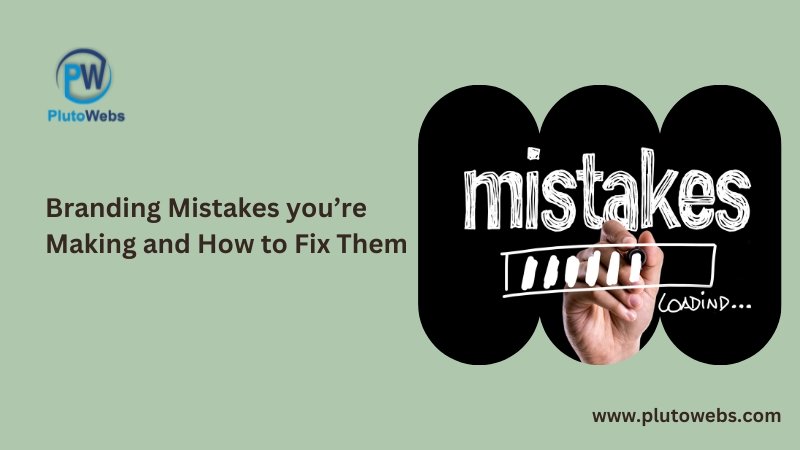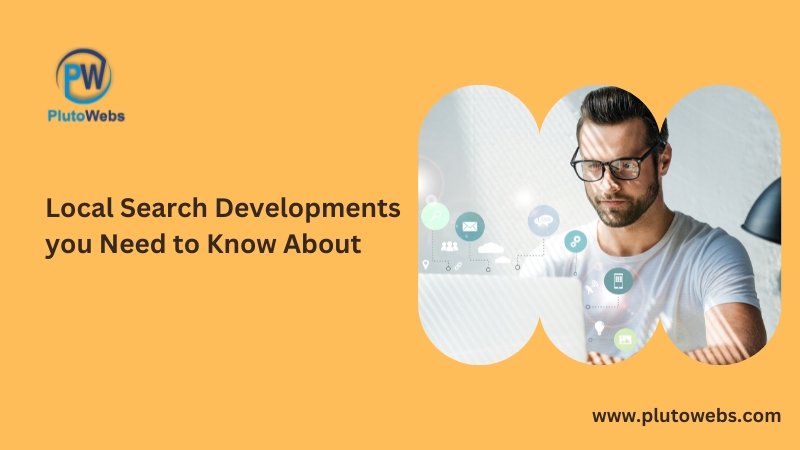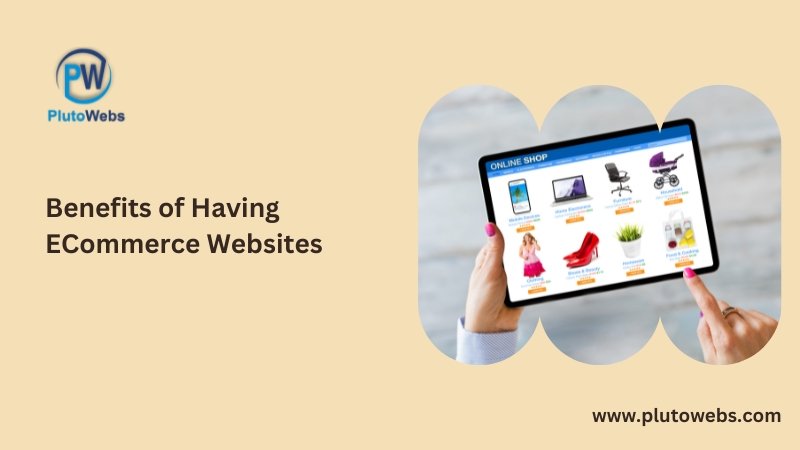Branding Mistakes you’re Making and How to Fix Them

For your company to continue to expand and be seen, you must develop your brand. However, if you don’t have a strong brand identity and brand strategy, it’s simple to make branding mistakes. You may develop a brand without sacrificing your company’s credibility by correcting these typical branding errors. Learn how to improve your brand strategy, authenticity, and execution by avoiding these typical branding blunders. Lack of a Branding Strategy This seems to be a given. Some might believe that as long as they are delivering value to a devoted audience, branding will take care of itself. When tactical pivots must be made, not having a clearly defined brand strategy becomes troublesome. For instance, when a brand doesn’t live up to expectations, when the leadership changes, or when a new competitor enters the market. When this happens, the effects of the brand’s lack of a north star are most severe. You can handle change and know when to invest if you are aware of your brand’s distinctive solution, goal, vision, projected path, and audience. The Important Parts of a Brand Strategy To enhance your customer mission and audience awareness, take into account these questions as you build your brand strategy. i) Purpose, vision, and essential values of the brand ii) How the company goes about entering the market Who would make a good audience? How does the brand stack up against the competition and specifically address the needs of the target market? How will this brand be found in the marketplace by the target audience? iii) The brand’s tactical activation components The character of the brand How the brand interacts with and appeals to the public once it has gained awareness. Not Spending enough on Branding Only you can choose the ideal blend of direct marketing and brand recognition required to meet your immediate and long-term goals. The strength of your company and the development of your brand should be important elements. If you’re thinking of cutting back on your brand spending due to impending economic uncertainties, reconsider. In fact, powerful leaders would argue that now might be the ideal time to launch an offensive. You will have an even greater chance to distinguish yourself as a thought leader if you seize this opportunity when others choose to slow down their awareness spending. To ensure that your brand and its value are top-of-mind, now is the time to make audacious decisions to get your name into earned media, submit for industry awards, and step up engagement with your current customers. Excessive Focus on Brand Design Elements An effective logo and vibrant colours can do wonders for a brand. But let’s be honest, the heavy lifting is done by the experiences that follow. Your website, your store, if you have one, your content and media assets, and your staff members who interact with customers are a few examples of these. Here, it’s necessary to exercise caution so as not to focus primarily on brand identity design and neglect to provide other crucial brand components the attention they require. Ignoring the Value of Your Brand’s People One strategy is to make a map of all the encounters your audience has with people associated with your brand, whether they are with the front desk customer service employees, the cleaning crew, or the business president. Every interaction should be in line with your brand, which calls for providing ongoing coaching and training to promote staff best practices. You can also neglect the role of spokesmen. You could be the undiscovered asset your business needs to develop its brand. It may be more effective to market you as a thought leader to develop the brand, increase awareness, and spur growth. Individuals want to buy from people, which is why. In most cases, what counts most is the person behind the brand and the relationship. Find opportunities to use a leader or leaders who can establish enduring authority and who embody the values of your brand to bring your brand to life. Choosing Trends Instead of Brand Authenticity This one is enormous. How frequently do people bring up a fresh concept during leadership talks that they learned about through reading about another company implementing it or that exemplifies a popular consumer trend? It goes without saying that you should keep an eye out for new trends that could affect your business. Additionally, there are occasions when it makes sense to adopt a good idea that is consistent with your brand, but it is always a good idea to consider whether doing so will come across as genuine and true to your brand’s values. This brings up the first typical branding error once more. To act as that north star, you must have a brand plan in place. Not Changing Your Brand Strategy Yes, a brand’s best friend is consistency. To ascertain whether the brand strategy is still necessary or if it needs to be developed, it is occasionally necessary to test and develop it. Every year, there will be little adjustments that are worthwhile making to make sure the brand strategy develops alongside the market, audience, and the brand itself. Even if not a single word changes, I advise a brand strategy checkup every year. That presents a chance for reinforcement, at the very least. You might make more than a small shift when a significant environmental or brand moment happens. Don’t be reluctant to succeed. A reliable outside source can assist you in identifying opportunities or misalignments that may be challenging to detect from the inside out. Underestimating the Chance to Leverage your Brand to Express an Opinion. The modern consumer is more keen to buy from a company that aligns with their values and worldview. Make it clear to your audience what you and your brand stand for because they care. Even locally, you can seek for chances to stand out in ways that are consistent with how your brand enhances the environment around you. You can
Local Search Developments you Need to Know About

What distinguishes local SEO from standard organic search results, and what does this mean for your marketing plan? Any SEO plan aimed at clients in a particular area, city, or neighbourhood must include local search. In order to increase your rankings and visibility in local search results, such as Google’s Map Pack/Local Pack, you should concentrate on local SEO. Increasing webpage rankings in organic search are done through organic SEO. Your website’s position in those organic results can have a beneficial impact on how well it performs in the Local Pack. When Google believes that a search query has local intent, organic results are another fantastic opportunity for your local business to show up in front of eager searchers. Therefore, despite the fact that local and organic SEO are connected in these ways, each calls for a distinct strategy that uses various optimization techniques. Let’s start at the beginning and ask what local SEO is and why it matters. Local SEO: What Is It? Search engine optimization for local search results is known as local SEO. This entails assisting Google in making your company’s listing in the Local Pack/Map Pack rank higher and show up more frequently in response to a higher volume of pertinent queries. Consider the last time you went out into the world in pursuit of something. Perhaps [men’s shoes], [daycare centers], or [coworking spaces] were involved. The goal of Google is to provide users with the most relevant results for every search. And those Map Pack results will be prominently shown on the first page of the search results when its algorithms determine that your purpose is local — that you are seeking something in the vicinity of you. Additionally, organic search results for establishments and services in your neighbourhood may supplement them. Local results may show up as the default view above all organic material when you search for something like [Mexican restaurants open now]. Google has identified your demand as being urgent and local. A plain blue link is less likely to satisfy that demand than the information provided in local search results, which includes company name, address, phone number, website, images and videos, customer reviews, and star ratings, among other things. Best practices for SEO generally include following Google’s Webmaster Guidelines and focusing on the user experience on your website. If you want your website to appear in organic search results where Google has concluded that the query has a local intent, doing this is crucial. However, as MapPack results are heavily influenced by your Google Business Profile (GBP) listing, you can appear in the Map Pack even if you don’t have a website. They might incorporate data that Google has gathered from other websites as well as user ideas. The most significant of these is Google’s “Guidelines for displaying your business on Google,” which also has a distinct set of rules specifically for local SEO. These rules are crucial for increasing your visibility in the Map Pack and preventing the suspension of your listing. Please keep in mind the distinctions between local organic and the Map Pack as you read through our Local SEO Guide. On-page optimization of your webpages, technical SEO for your website, and other topics may occasionally come up. These subjects deal with your chances to show up in local organic results and use your website to enhance Map Pack rankings. You are learning about local SEO as it relates to the local results you get on Google Maps as you read about local reviews and star ratings, Google Posts, and other components of your GBP. The Importance of Local Search Here are some figures showing the continued value of local search for businesses: Google reports that about 25% of local smartphone searches result in a purchase, and about 75% of those searches lead to a visit to a business. Google estimates that geography is a factor in about 30% of the searches it processes. In a recent poll on local search, about 60% of customers stated that they conduct daily local searches. According to a recent local SEO survey, about 80% of customers who are conducting a local search read online reviews of businesses and take close to 14 minutes to do so. Google Maps is used by about 85% of people to locate businesses. 90% of the time, Yelp is among the first five search results for SMB searches. Around the world, 74% of in-store customers who conducted their search prior to entering the store claimed to have looked for information such as “closest store nearby,” “locations,” “in stock nearby,” and other kinds of hyperlocal data. For their local searches, more than half of all Internet users globally utilise a mobile device. To find out more about nearby businesses, 83% of searchers use Google Search; 55% use Google Maps, 44% use Apple Maps, 39% use Yahoo, and 31% use Bing. Google’s Local Ranking Algorithm Determination Google is far more transparent about what it takes to rank in local results but jealously guards its organic search ranking algorithms. Google lists these as the top three local ranking criteria in each category: Relevance Distance Presence “Relevance is the degree to which a local business profile corresponds to a user’s search criteria. To help Google better understand your business and match your profile to relevant searches, add complete and detailed business information, according to Google’s help guide on how to raise your local rating. Distance, according to Google, is the distance between each potential search result and the location keyword entered during the search. We’ll determine distance based on a user’s location if they don’t indicate a location in their search. Furthermore, prominence in this instance refers to the level of notoriety that the company has in Google’s eyes. As search algorithms attempt to take offline significance into account, this is likely the most complicated category of local ranking factors. Increasing Local Search Visibility As you can see, local search is a crucial channel for companies of all sizes
Benefits of Having E-Commerce Websites

E-Commerce is a word, which is commonly used to define any kind of business dealing that includes the passing of information through the Internet. In the last era, we have seen e-Commerce websites working on the Internet. So, the question arises what is motivating this new development and what are the supposed benefits that are attracting so many industries to create e-Commerce websites? Some of the advantages of E-Commerce websites are explained below: 1- Increase customer’s trust: A beautifully designed and creatively developed website generates trust for your clients. They know it very well that if you take care of your website with proper attention and actively than you must treat your clients with the similar technique. 2- Accessibility & Easiness: There are many people in the world for whom, e-Commerce converts one of the favorite ways of shopping because the found online shopping an easy and convenience. They are permitted to purchase goods or services from their home at any time. The greatest thing about it is purchasing opportunities that are rapid, appropriate and user-friendly with the capability to transfer funds online. Because of its accessibility, buyers can save their lots of time and money by searching their goods easily and making buying online. 3- Fascinate New Clients with Search Engine Visibility: As we know that physical marketing is the route by branding and relations. But, online marketing is also motivating by traffic that originates from search engines. For clients, it is not common to follow a connection in the search engine results and visit on an e-commerce website that they never heard of. More Search Engine Visibility will attract more people to your e-commerce website. 4- Keep Birds Eye on Buyers’ Buying Habit: E-commerce traders can effortlessly keep a continuous eye on buyers’ buying habits and comforts to adapt their suggestion suit to buyers’ desires and this is the best thing of e-commerce. By satisfying their requirements continuously, you can increase your continuing relationship with them and build long-term relations. 5- Selling Products globally: If you are running a store, it will be bounded to the geographical region for which you can provide service, but on the other hand with an e-Commerce website, you can sell your goods and services globally. The complete world is your playground, where you can trade your whole variety of goods without any geographical restrictions. Furthermore, the remaining restriction of geography has dissolved by m-commerce that is also known as mobile commerce. 6- Services provided 24*7/365: E-commerce traders can enjoy that store will remain open 24/7/365 because they can run e-commerce websites all the time. This is a way to increase their sales by increasing their number of orders. Though, it is also helpful for buyers as they can buy products when they need no matter whether it is morning or midnight.
